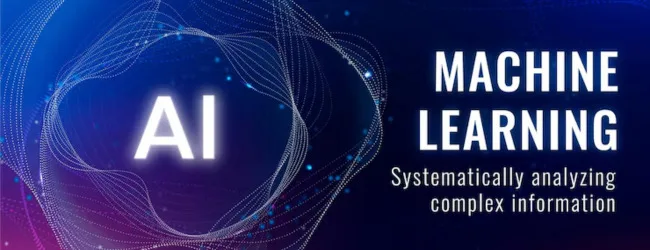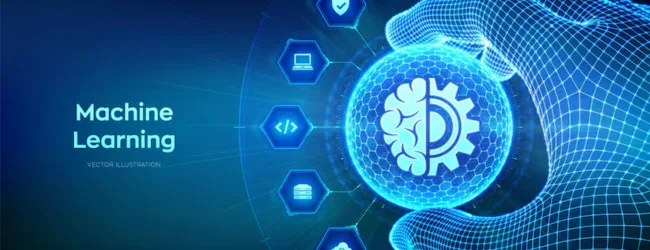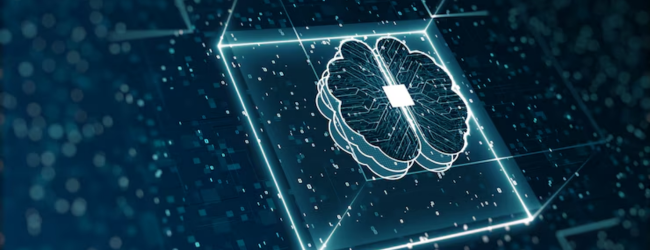Table of contents
In today’s tech-driven world, the terms “Machine Learning” and “Deep Learning” are thrown around frequently, often interchangeably. While both are subfields of Artificial Intelligence (AI) and aim to empower computers to learn from data, they operate on fundamentally different principles and are suited for different types of problems. Understanding their nuances is crucial for anyone looking to grasp the current landscape of AI.
This blog post will delve into the intricacies of both Machine Learning and Deep Learning, exploring their definitions, key concepts, applications, and ultimately highlighting the main distinctions between them.
What is Machine Learning?

At its core, Machine Learning (ML) is a field of computer science that enables computer systems to learn from data without being explicitly programmed. Instead of relying on hard-coded rules, ML algorithms identify patterns, extract insights, and make predictions or decisions based on the data they are trained on. Think of it as teaching a dog new tricks by showing it examples and rewarding correct behavior.
The process generally involves the following steps:
- Data Collection and Preparation: Gathering relevant and high-quality data is the foundation of any successful ML model. This data is then cleaned, preprocessed, and often split into training, validation, and testing sets.
- Algorithm Selection: Based on the type of problem (e.g., classification, regression, clustering) and the characteristics of the data, an appropriate ML algorithm is chosen. There’s a wide array of algorithms available, each with its strengths and weaknesses.
- Model Training: The chosen algorithm is fed the training data. During this phase, the algorithm learns the underlying patterns and relationships within the data, adjusting its internal parameters to minimize errors and improve its predictive capabilities.
- Model Evaluation: Once trained, the model’s performance is evaluated using the validation and testing datasets. Metrics relevant to the problem are used to assess its accuracy, precision, recall, and other key indicators.
- Deployment and Monitoring: If the model performs satisfactorily, it can be deployed to make predictions on new, unseen data. Continuous monitoring is crucial to ensure the model’s performance remains consistent over time as the data landscape might evolve.
Important Concepts of Machine Learning
To better understand Machine Learning, it’s essential to grasp some of its core concepts:
- Supervised Learning: This is the most common type of ML where the algorithm learns from labeled data. Each data point is associated with a known output or target variable. Examples include image classification (identifying objects in images) and spam detection (classifying emails as spam or not spam).
- Unsupervised Learning: In this paradigm, the algorithm learns from unlabeled data without any predefined output variables. The goal is to discover hidden patterns, structures, or groupings within the data. Examples include customer segmentation (grouping customers based on their purchasing behavior) and anomaly detection (identifying unusual data points).
- Reinforcement Learning: This type of ML involves an agent learning to make decisions in an environment by receiving rewards or penalties for its actions. The goal is to learn an optimal policy that maximizes the cumulative reward. Examples include training robots to perform tasks and developing game-playing AI.
- Features: These are the input variables or attributes used by the ML algorithm to learn from the data. Feature engineering, the process of selecting, transforming, and creating relevant features, plays a significant role in the performance of ML models.
- Algorithms: These are the specific mathematical procedures used by the ML model to learn from the data. Examples include linear regression, logistic regression, decision trees, support vector machines (SVMs), and random forests.
Where Do We Use Machine Learning?

Machine Learning has permeated numerous aspects of our lives, often working silently behind the scenes to enhance efficiency, personalize experiences, and solve complex problems. Here are some key areas where Machine Learning is widely used:
- Recommendation Systems: Platforms like Netflix, Amazon, and Spotify leverage ML algorithms to analyze user behavior and preferences, recommending movies, products, and music tailored to individual tastes.
- Spam and Fraud Detection: Email providers and financial institutions utilize ML to identify and filter out spam emails and detect fraudulent transactions, protecting users from malicious activities.
- Search Engines: Google, Bing, and other search engines employ ML algorithms to understand the intent behind your queries and deliver more relevant search results. They also use ML to improve ranking algorithms and identify low-quality content.
- Virtual Assistants: Voice assistants like Siri, Alexa, and Google Assistant rely heavily on ML for speech recognition, natural language understanding, and responding to user commands.
- Healthcare: ML is being applied in various healthcare applications, including disease diagnosis (e.g., identifying cancerous tumors in medical images), drug discovery, personalized medicine, and predicting patient outcomes.
- Autonomous Vehicles: Self-driving cars utilize a multitude of ML algorithms for tasks like object detection, lane keeping, traffic sign recognition, and path planning, enabling them to navigate and make driving decisions.
- Natural Language Processing (NLP): ML powers various NLP applications, including machine translation (like Google Translate), sentiment analysis (understanding the emotional tone of text), chatbots, and text summarization.
- Image and Video Analysis: ML algorithms are used for tasks like image recognition (identifying objects in photos), facial recognition, video surveillance analysis, and content moderation.
- Financial Modeling and Trading: Financial institutions use ML for tasks like credit risk assessment, algorithmic trading, fraud detection, and predicting market trends.
- Manufacturing and Quality Control: ML can be used to optimize manufacturing processes, predict equipment failures, and automate quality control inspections.
- Personalized Marketing and Advertising: Businesses use ML to analyze customer data and deliver targeted marketing campaigns and personalized advertisements.
- Gaming: ML is used to create more intelligent and adaptive game AI, enhancing the gaming experience.
- Supply Chain Optimization: ML algorithms can analyze demand patterns, optimize inventory management, and improve logistics in supply chains
💡 Pro Tip: If you want to start a Business but have too many doubts, connect with a Business expert from Boss Wallah for guidance – https://bw1.in/1116
What is Deep Learning?

Deep Learning (DL) is a subfield of Machine Learning inspired by the structure and function of the human brain. It utilizes artificial neural networks with multiple layers (hence the term “deep”) to analyze and extract complex patterns from vast amounts of data.
The key difference lies in how features are learned. In traditional ML, relevant features often need to be manually engineered and provided to the algorithm. Deep learning, on the other hand, can automatically learn hierarchical representations of features directly from raw data. Each layer in the deep neural network learns increasingly abstract and complex features, allowing the model to understand intricate relationships.
The architecture of a deep learning model typically consists of interconnected nodes or “neurons” organized into layers:
- Input Layer: Receives the raw data.
- Hidden Layers: Multiple layers where the data is processed and transformed through mathematical operations and activation functions. The depth of these layers allows for the learning of complex hierarchies of features.
- Output Layer: Produces the final prediction or classification.
The training process for deep learning models involves feeding large datasets through the network and adjusting the weights and biases of the connections between neurons using optimization algorithms like gradient descent. This iterative process allows the network to learn the optimal representation of the data for the given task.
ALSO READ | Instagram Monetization: How to Earn Money from Instagram?
Important Concepts of Deep Learning
Understanding Deep Learning requires familiarity with these key concepts:
- Neural Networks: These are the fundamental building blocks of deep learning models, inspired by the human brain. They consist of interconnected nodes (neurons) that process and transmit information.
- Deep Neural Networks (DNNs): Neural networks with multiple hidden layers, enabling them to learn complex patterns.
- Convolutional Neural Networks (CNNs): A type of DNN particularly well-suited for processing image and video data. They use convolutional layers to automatically learn spatial hierarchies of features.
- Recurrent Neural Networks (RNNs): Designed to handle sequential data, such as text, audio, and time series. They have feedback connections that allow them to maintain a memory of past inputs.
- Activation Functions: Non-linear functions applied to the output of each neuron, introducing non-linearity into the network and enabling it to learn complex relationships. Examples include ReLU, sigmoid, and tanh.
- Backpropagation: The core algorithm used to train deep neural networks. It calculates the gradients of the loss function with respect to the network’s weights and uses these gradients to update the weights in a direction that minimizes the loss.
Where Do We Use Deep Learning?
Due to its ability to automatically learn complex features from large datasets, Deep Learning has achieved remarkable success in various domains:
- Computer Vision: Image recognition, object detection, image segmentation, facial recognition.
- Natural Language Processing (NLP): Text generation, machine translation, sentiment analysis, chatbot development, speech recognition.
- Healthcare: Medical image analysis, drug discovery, disease diagnosis.
- Finance: Fraud detection, algorithmic trading, risk assessment.
- Autonomous Vehicles: Object detection, lane keeping, traffic sign recognition.
- Recommendation Systems: Personalizing content recommendations for users.
Main Differences Between Machine Learning and Deep Learning
While Deep Learning is a subset of Machine Learning, several key differences set them apart:
| Feature | Machine Learning | Deep Learning |
| Feature Engineering | Often requires manual feature engineering by experts. | Automatically learns features from raw data. |
| Data Dependency | Can work well with smaller datasets. | Typically requires large amounts of data for training. |
| Hardware Dependency | Can often run effectively on standard CPUs. | Often requires powerful GPUs for efficient training. |
| Algorithm Complexity | Generally simpler algorithms with fewer layers. | Complex neural networks with many hidden layers. |
| Interpretability | Models are often more interpretable and explainable. | Models can be black boxes, making interpretability challenging. |
| Problem Solving | Well-suited for structured data and simpler tasks. | Excels at complex tasks with unstructured data (images, text, audio). |
| Training Time | Generally faster training times. | Can have significantly longer training times. |
In essence:
- Machine Learning is a broader field focused on enabling computers to learn from data using various algorithms. It often relies on manually engineered features.
- Deep Learning is a specific approach within Machine Learning that utilizes deep neural networks to automatically learn hierarchical features from large amounts of raw data.
Choosing between Machine Learning and Deep Learning depends on the specific problem, the availability of data, computational resources, and the need for interpretability. For simpler tasks with limited data, traditional ML algorithms might suffice. However, for complex problems involving vast amounts of unstructured data, Deep Learning has proven to be a powerful and transformative tool.
Understanding the “difference between machine learning and deep learning” is not just about knowing the definitions; it’s about appreciating their individual strengths and how they contribute to the ever-evolving landscape of Artificial Intelligence. As technology continues to advance, both Machine Learning and Deep Learning will undoubtedly play increasingly vital roles in shaping our future.
Need Expert Guidance?
Starting a business can be challenging, but you don’t have to do it alone! At Boss Wallah, our 2,000+ business experts are ready to provide valuable insights and guidance. Whether you need help with marketing, finance, sourcing, or any other area of any business, our business experts are here to help you succeed- https://bw1.in/1116
Confused about Which Business to Start?
Want to start your own business but unsure which one to choose? Explore Boss Wallah, where you’ll find 500+ courses by successful business owners, featuring practical, step-by-step guides on starting and growing various businesses. Find your perfect business idea today – https://bw1.in/1111
Conclusion
Machine Learning and Deep Learning, while interconnected, represent distinct approaches within the realm of Artificial Intelligence. Machine Learning provides a broad toolkit of algorithms that learn from data, often requiring manual feature engineering and working effectively with smaller datasets. Deep Learning, a powerful subset, utilizes deep neural networks to automatically extract complex features from vast amounts of raw data, achieving remarkable success in tasks involving unstructured information like images, text, and audio. Understanding the nuances between these two fields is crucial for navigating the rapidly advancing landscape of AI and leveraging their respective strengths to solve diverse and challenging problems. As data continues to grow and computational power increases, both Machine Learning and Deep Learning will undoubtedly remain central to technological innovation and continue to shape the way we interact with the world.
FAQs
Q: Is Deep Learning always better than Machine Learning? A: Not necessarily. Deep Learning typically requires large amounts of data and significant computational resources. For smaller datasets or simpler problems where features can be easily engineered, traditional Machine Learning algorithms might be more efficient and effective.
Q: Can I use Machine Learning without knowing programming? A: While some tools offer no-code or low-code Machine Learning capabilities, a solid understanding of programming (especially Python) is highly beneficial for building, deploying, and customizing ML models.
Q: What kind of data is suitable for Machine Learning? A: Machine Learning can be applied to various types of data, including structured data (tabular data), unstructured data (text, images, audio, video), and time-series data. The suitability depends on the specific problem and the chosen algorithm.
Q: How do I get started with learning Machine Learning? A: There are numerous online courses, tutorials, and resources available. Start with the fundamentals of programming and mathematics (linear algebra, calculus, statistics), and then explore introductory Machine Learning courses. Q: What are some popular Machine Learning libraries? A: Some popular Python libraries for Machine Learning include scikit-learn, TensorFlow, Keras, PyTorch, and pandas.


